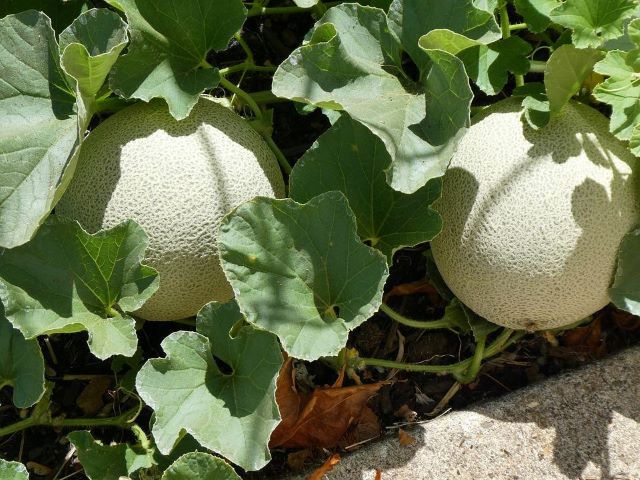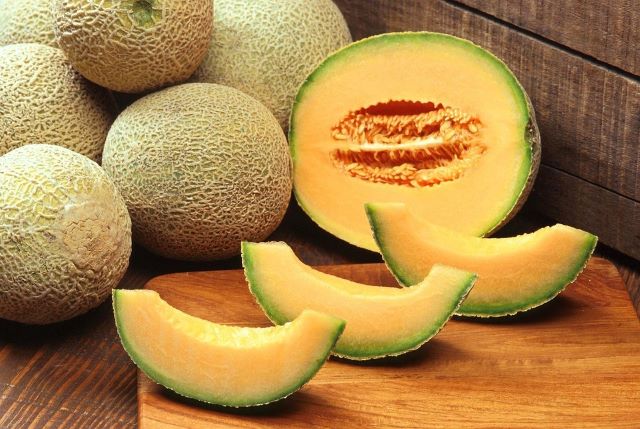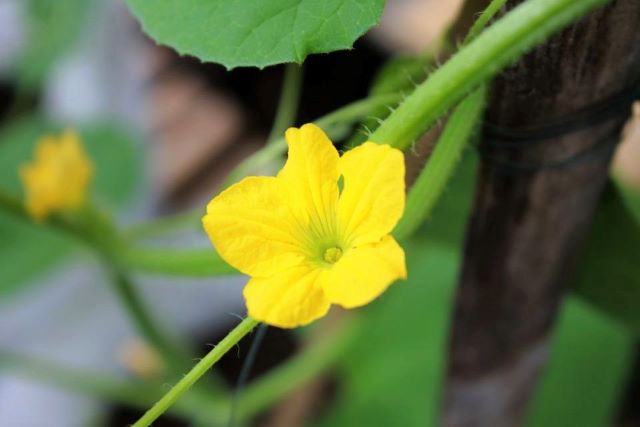You’ve patiently grown your cantaloupe throughout the season, and now you want to know when your cantaloupe is ripe and ready for harvesting. When I first started growing cantaloupe, I harvested too early, resulting in very bland-tasting melons.
Picking cantaloupe at the right time will ensure you are harvesting a cantaloupe with a well-developed flavor that is sweet and juicy with the right texture. So when exactly is the right time to pick a cantaloupe? Let’s find out so you don’t need to bite into a crunchy tasteless cantaloupe!

Table of Contents
When is a Cantaloupe Ripe and Ready to Harvest?
Cantaloupe is ready to harvest when it displays a change in skin color, it smells sweet, the stem easily comes away from the cantaloupe when gently pulled (known as slipping), the development of skin netting and a gentle give in firmness. A sufficient growing time of 85 days is also a good indicator of when a cantaloupe will be ready for harvesting.
Let’s look at each one to find out exactly what you need to look for when determining the best time to harvest your cantaloupe.
1. Cantaloupe Skin Color Change
The first thing to look for when determining if your cantaloupe is ripe, is to check its color. As a cantaloupe grows and develops, its skin undergoes changes that provide visual cues about its ripeness.
When the cantaloupe first develops, the melon skin is smooth and green. And as it matures, the cantaloupe skin changes to a creamy yellow or even deeper golden color, depending on the variety you’re growing.
There shouldn’t be any deep green coloring on a ripe cantaloupe. If you spot darker green patches, wait for the color to change before harvesting. Unripe cantaloupes won’t taste very nice; they might even be slightly sour. And they’ll be unpleasantly crunchy! So wait for the cantaloupe to change skin color before harvesting.
Related: The Cause of Sour Cantaloupe
2. Smell Your Cantaloupe
One of the best ways to determine if your cantaloupe is ready to harvest is to give it the smell test. An unripe cantaloupe won’t have much of a smell and is one way to determine that it needs more time to mature and ripen.
A ripe cantaloupe releases a sweet and fragrant smell. When you smell the cantaloupe up close, you’ll notice a tropical scent that can be musky, floral, or slightly perfumed. The aroma combines melon and sweetness with hints of floral. In other words, your cantaloupe will smell delicious!
You can also use the smell test if you’re buying a cantaloupe in the supermarket. If you’re not growing a cantaloupe yourself, this is the best way to check you’re purchasing a ripe cantaloupe.
3. Stem Comes Away Easily from the Cantaloupe
The next important indicator that a cantaloupe is ready to harvest is if the stem will easily come away from your melon. This is known as ‘slipping’ or ‘stem slip’.
After checking your cantaloupe appears to be the right color, you can check the vine stem, and if you notice it’s starting to dry out, some of the leaves are drying near the melon, or if there is any cracking close to the cantaloupe fruit, go ahead and give it a gentle pull. If the stem easily detaches from the melon, you know you have just harvested a ripe cantaloupe.
On the other hand, if the stem is still very green and healthy with no cracking, then you probably have some more waiting. A gentle pull on the stem will also provide strong resistance, so you’ll know the cantaloupe is not ready for harvesting yet.
4. Skin Netting and Firmness of Cantaloupe
As well as the color change, the surface of the cantaloupe develops a distinctive netted texture. Cantaloupes usually start with smooth skin, and as the fruit develops, the skin texture becomes rough, with raised ridges that form a web or net pattern. This can signal the fruit’s progression towards ripeness.
The netting on a cantaloupe becomes more pronounced and defined as it ripens. The once-smooth skin transforms into a rough and textured surface that most of us would be familiar with.
By checking the skin’s transformation, you can gauge the maturation process of the cantaloupe.
As well as the skin texture, I like to check the firmness of the cantaloupe. As the cantaloupe matures, the texture will change slightly. If you press gently on the end of the cantaloupe opposite the stem, you will notice a slight give in a ripe melon. If the cantaloupe is still rock hard, it’s not yet ripe. Also, watch for a mushy texture here, indicating the cantaloupe is overripe!
5. Cantaloupe Growing Time

Lastly, when determining the right time to harvest your cantaloupe, I always work out how long it has already been growing. On average, cantaloupes take 85 days to grow, with a normal range being 80-100 days.
For example, these Ambrosia Cantaloupe Melons average 86 days of growing time in the right conditions. While Hales Best Cantaloupes are a close average of 90 days of growing time.
Growing times also vary depending on the climate, soil conditions, watering, and care given during the growing season. If any of the growing conditions are not ideal, you’re cantaloupe will take longer to mature and be ready for harvesting.
Another tip to look for is once you see flower development, cantaloupes are usually around 35-45 days away from being ready to harvest.

Final Thoughts
Knowing when a cantaloupe is ready to harvest is a valuable skill for a home gardener who loves growing their own fruit, as I do. I no longer second-guess my harvest time.
By paying attention to the cantaloupe’s color, smell, stem, skin netting, and firmness, I can confidently pick perfectly ripe cantaloupes, and you can too! Remember to check the specific days to maturity, as this is a handy hint for harvesting at the right time.
Some Favorite Gardening Products
- Felco Garden Pruners
- AeroGarden Bounty Indoor Hydroponic Herb Garden
- King Bird Raised Garden Bed
- Sloggers Waterproof Garden Gum Boots
Further Reading:
- Pepino Melon: How To Grow The Plant And Eat The Fruit
- Watermelon Plant Dying? Causes and Solutions
- Kiwano Melon: Grow African Horned Melon and Eat the Fruit
- Why Are My Watermelons Not Ripening? With Solutions!
- How To Grow Dragon Fruit: Planting, Caring And Harvesting
- 5 Reasons Dragon Fruit Plant Is Turning Yellow
